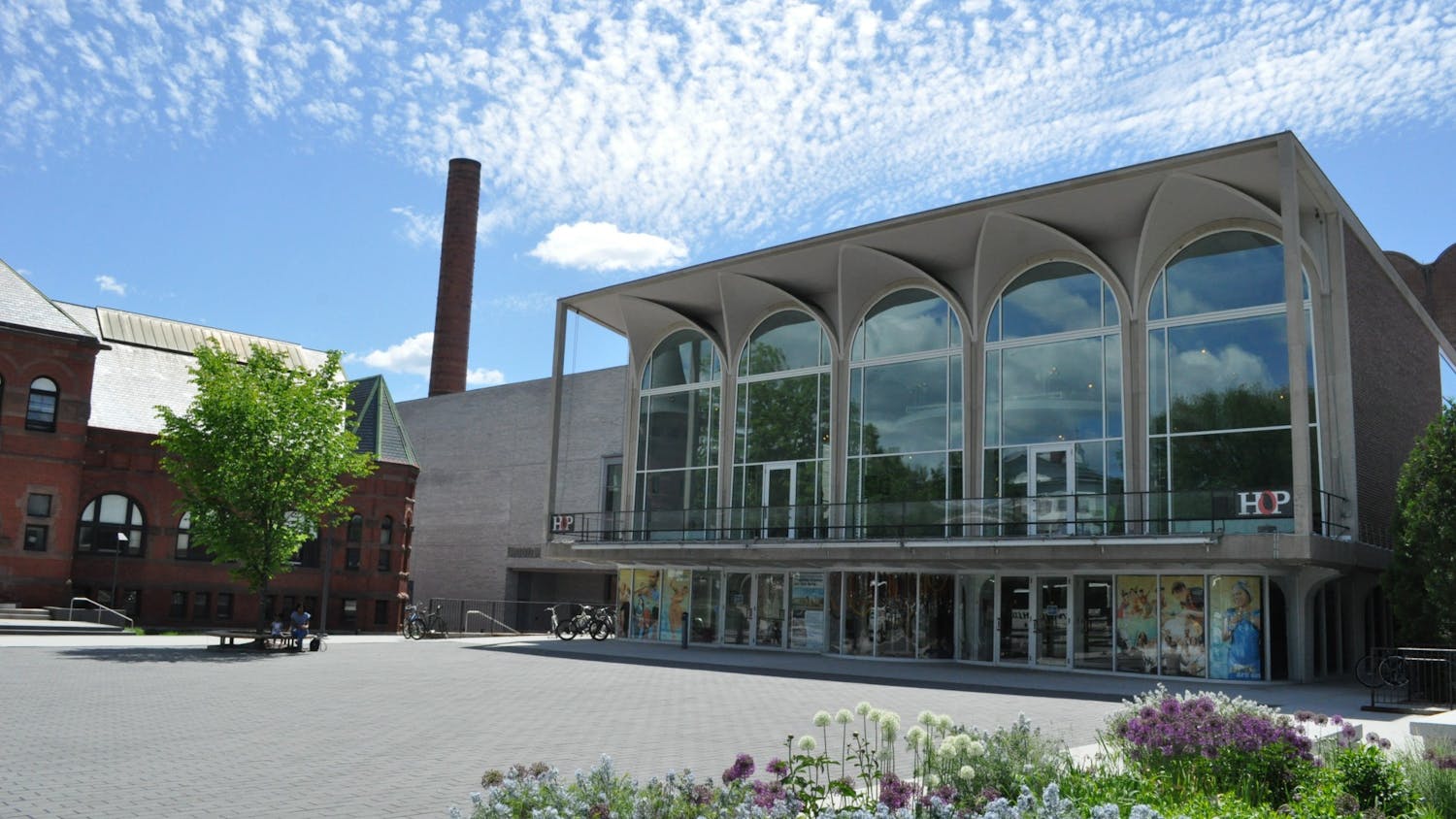It becomes clear after spending a few minutes in the gallery that the pieces in the exhibit have more in common than a first viewing reveals, starting with the photos' ability to capture "the aesthetic of unique spaces," according to a press release from Spheris.
"Sense of Space" forms a cohesive exhibit despite the wide range of spaces and places it explores because each photograph elicits an emotional or personal reaction from viewers, Spheris associate director Azariah Aker said in an interview with The Dartmouth.
"For the viewer, [the photographs] all evoke a certain response," Aker said.
In fact, many common threads can be noted among these seemingly disparate works, forging connections and elaborating on themes in a way that a solo exhibit could not. Stockbridge's stark images of a grand hotel languishing in disrepair are juxtaposed with Westby's shots of a forest during the winter a landscape every bit as sparse and hauntingly elegant as the old-fashioned hotel.
Similarly, the hunting scenes by Sondergaard and Howalt hang next to photographs of New York City beaches taken by Gaffney, a resident of Lebanon, N.H. While vacationing city-dwellers and hunters at work seem to have little in common, connections between the two groups emerge upon closer examination of the artists' works.
"[Each artist] in the exhibit seems to pull back a little bit and kind of take the larger view," Gaffney said in an interview with The Dartmouth. "I would say they're all toying with the idea of the empty space."
In Sondergaard and Howalt's photo "Flintebjerget," (translated into English from Danish as "The Flint Hill,") a blank sky consumes more than half of the image. Only the bottom of the photograph is filled with rolling green hills, occupied by what appears to be several hunters at work.
But according to Aker, the hunters are actually images of a single man the product of shots taken over the course of one day and transposed onto a single background. In each position, the hunter's back is turned, facing the sky's vast emptiness. Upon closer inspection, the man appears to be eying a tiny bird which disrupts the peaceful monotony of the sky. A gray, apparition-like figure, this bird provides a subtle but striking contrast to the backdrop of the shot. The bird is small and faded, easy to overlook, yet key to the theme of the photograph it is the small things, rather than the large ones, that define our experiences. What appears massive or important may simply be empty space.
In a similar manner, Gaffney's photographs use empty space as a tool to highlight images which might otherwise appear insignificant. "Boy and Water," for instance, is composed primarily of the ocean's ripples and waves, a uniform blue that is interrupted only by the image of a teenage boy floating on a bright white inner tube. Although Gaffney took the photo at Coney Island in 2008, he said that even now he clearly remembers being struck by the image of the young boy.
"There was a lot going on, and there was this one teenager in the water that I just thought was kind of having his own little moment," Gaffney said.
Gaffney explained that the action-oriented shooting style of "Boy and Water" and his other photographs in the exhibit represents an artistic departure from the more formal, deliberate methodology of some of his earlier work. He cited his 2004 series "Treasure Hunt," in which he arranged junk food to appear as if it was part of nature, with pretzel sticks forming a forest path and Twinkies strewn inconspicuously in a grassy valley.
"For the longest time my works were very explicitly set up. I would take objects and sort of put them into landscapes," Gaffney said. "I got to the point where I felt like I was repeating myself and didn't have anything new to say doing it that way."
The artist's more recent photos of everyday moments in New York City represent an attempt to explore "the grand tradition of street photography," according to the artist.
By contrast, many of the other photographs in the exhibit are arranged shots. In particular, Stockbridge's rendering of the abandoned Devine Lorraine Hotel are marked by artistic preparation. With doors opened strategically to reveal images of once-sumptuous furniture now lying unused, tattered and worn, Stockbridge's photographs have clearly been painstakingly planned. The effects are visually striking and even beautiful, despite the subjects' outward shabbiness.
The controlled charisma of Stockbridge's photos contrasts boldly with the free-form spontaneity of Gaffney's work, creating a visually exciting exhibit that is rich with questions and contradictions.
Such parallels can be noted throughout "Sense of Space." The show is enhanced by these common threads, while its diversity provides a varied and exciting aesthetic experience. Thus, "Sense of Space" is the best type of exhibit one that has achieved the ideal balance between variety and cohesion.
"Sense of Space/Sense of Place," which opened at the Spheris Gallery on March 6, will remain on display through April 13.




